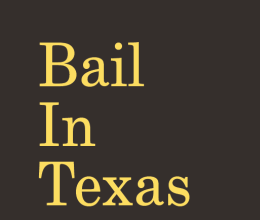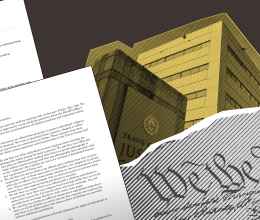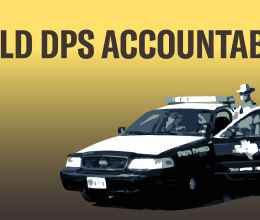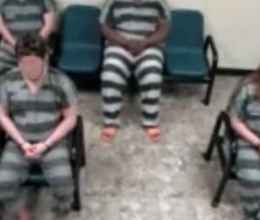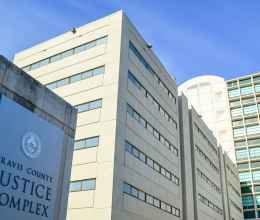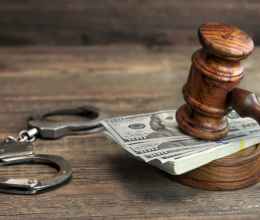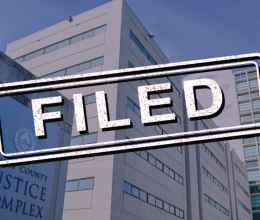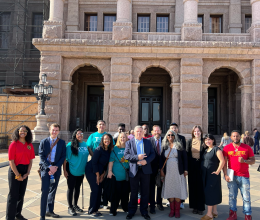
This information was originally developed and provided with permission by our partners at Texas Appleseed and Texas Fair Defense Project. The original documents are available for download in English and Spanish.
The Texas legislature passed a bill to repeal the Driver Responsibility Program (DRP) this session (H.B. 2048), and it was signed into law by the Governor in June. The bill will go into effect on September 1, 2019. This resource is intended to answer common questions about how the repeal will work. Select from the questions below to jump to the section you care about.
- What does the repeal of DRP mean?
- I’ve already paid my surcharges. Will I get a refund?
- I owe surcharges right now. Should I pay them?
- If my driver’s license is suspended, what steps do I need to take to get my license back?
- Will I have to take a driving test with DPS?
- I’m currently on a payment plan for DRP surcharges. How does this affect me?
- How are OmniBase holds affected by this change in the law?
- I have an additional suspension for another reason. Will the new law impact that suspension, too?
- Do I have to pay a reinstatement fee? What if I can’t afford to pay a reinstatement fee?
- I hear there is a lawsuit challenging the DRP. What’s going to happen with the pending lawsuit and will I possibly receive damages?
- Why do we have to wait until September 1 for the new law to go into effect?
- Where can I read the bill?
- Where can I get more information or ask additional questions?
I heard the Driver Responsibility Program (DRP) was repealed. What does this mean?
The bill passed by the Texas legislature eliminates the DRP entirely, including all past, present, and future surcharges. This means any surcharges owed as of September 1, 2019, will no longer be owed. And no surcharges will be assessed after September 1, 2019. Approximately 1 million individuals’ driver’s license suspensions will be lifted on September 1, because the DRP is the only reason these individuals’ driver licenses are currently suspended; they have no other underlying suspensions. Another estimated 500,000 individuals’ driver’s licenses will remain suspended after their DRP surcharges are eliminated because their licenses are suspended due to other enforcement actions in addition to the DRP, such as suspensions for certain criminal convictions, entry into the Failure to Appear/Pay database, and other DPS enforcement actions.
I’ve already paid my surcharges. Will I get a refund?
No. Although all unpaid DRP surcharges will be eliminated on September 1, 2019, there will not be reimbursement for any DRP surcharges that have already been paid through the program.
I owe surcharges right now. Should I pay them?
You might decide not to make payments on outstanding DRP surcharges, knowing that they will be eliminated as of September 1. Your decision could depend on your particular situation:
- If your driver’s license is already suspended due to the DRP, continuing not to pay will not change your current situation.
- If your license is not already suspended and you stop making payments, your driver’s license will likely be suspended until the program ends in September. With a suspended driver’s license, you may receive a ticket for driving with an invalid license, and in certain circumstances, may be arrested if you are stopped by law enforcement.
- If you are eligible for the Indigency Program, it’s worth applying to that program right now in order to have your surcharges waived. If your income is 125% or below the federal poverty level, you qualify. If your application is granted, you will not need to pay anything.
- Similarly if you are eligible for the Incentive Program, you should apply now. Your income needs to be 125% to 300% of the federal poverty level to qualify. If your application is granted, you will have 6 months to pay your reduced surcharge amount. Because the DRP will end during that 6 month period, you will not need to pay anything. This means that if your gross income is under 300% of the federal poverty level, you will not need to pay any surcharges if you apply for the incentive program.
- Learn more about how to apply to either the Indigency or Incentive Programs.
My driver’s license is suspended because I owe surcharge debt. What steps do I need to take to get my license back?
That depends on a number of things including how long your license has been suspended, whether you owe reinstatement fees, and whether you have other suspensions or holds. If unpaid DRP surcharges are the only reason for your suspension and you owe no reinstatement fees for other suspensions, your license will be automatically reinstated on September 1.
Check if you have other suspensions or owe reinstatement fees. If your license is suspended under other programs in addition to the DRP, you will need to satisfy the requirements of those programs before you obtain a valid license. Even if you have no other suspensions or reinstatement fees, you may need to renew or obtain a copy of your driver’s license. For example, if you need a duplicate copy of your license because it has been taken away, you will need to order one through DPS for $11. If your license has expired during the suspension period, you will need to renew it through DPS for $25. This can usually be done online.
Will I have to take a driving test with DPS?
If your driver’s license has been expired for more than two years, you will need to apply and re-test for a driver’s license. These tests include a written test, vision test, and driving test.
I’m currently on a payment plan for DRP surcharges. How does this affect me?
Your payments will continue to be due on a monthly basis until September 1. If you miss a payment before then, your license will likely be suspended in a matter of days. However, beginning September 1, you should stop making payments. After this date, you owe nothing and do not need to make any additional payment to DPS related to DRP surcharges.
I also have OmniBase holds due to unpaid tickets. How are those affected by this change in the law?
In short, they are not affected. It’s very common for a person to have both a suspension for not paying DRP surcharges and an OmniBase hold for not paying a fine at the same time. Only the DRP surcharges are affected by the new law. The OmniBase holds are not affected. Check to see if you have OmniBase holds, and search by your driver’s license number and date of birth. To lift an OmniBase hold, you will need to either pay the fine owed or work out an alternative way to resolve what you owe with the court, usually through a payment plan to pay in monthly installments or through community service. To arrange one of these options, contact the court that has placed the OmniBase hold directly.
I have an additional suspension for another reason. Will the new law impact that suspension, too?
The new law only impacts suspensions for not paying DRP surcharges. If you have a suspension for any other reason, like a DWI charge, a drug possession conviction, driving with an invalid license, or driving without insurance, that suspension will not change come September. Find out what types of suspensions or holds you might have that are preventing you from renewing your driver’s license.
Do I have to pay a reinstatement fee? What if I can’t afford to pay a reinstatement fee?
Approximately 350,000 individuals whose driver’s licenses are suspended due to unpaid Driver Responsibility Program surcharges will still need to pay a reinstatement fee that is not related to the DRP repeal before they can reinstate their license. Upon payment of that fee, these individuals’ licenses will be reinstated if they have no other suspensions. Individuals can check if they have reinstatement fees . You can pay the fees online or through the mail. Unfortunately, there is no program to reduce or waive reinstatement fees. If you have no other holds then once the reinstatement fees are paid you will be able to either request a copy of your driver’s license, renew your driver’s license, or, if your driver’s license has been expired for more than two years, apply and re-test for a driver’s license.
I hear there is a lawsuit challenging the DRP. What’s going to happen with the pending lawsuit and will I possibly receive damages?
There is currently a lawsuit against DPS for the DRP program. That case is still pending, and it is unclear what impact repeal will have on it. However, monetary damages in that lawsuit were not requested, so you will not be eligible to receive damages.
Why do we have to wait until September 1 for the new law to go into effect?
Most new laws in Texas, unless otherwise specified, become law at the beginning of the new fiscal year, which begins September 1. That's why the repeal bill has an effective date of September 1.
Where can I read the bill?
Read the text of H.B. 2048. Click on the icon on the row marked 'Enrolled' to read the final version of the bill that was sent to the governor.
Where can I get more information or ask additional questions?
For specific information about your Texas driver’s license and how the DRP repeal impacts you, email the Texas Department of Public Safety. This is a unique email address that has been created to answer the public’s questions related to the DRP repeal. You can also call the DPS customer service line at (512) 424-2600 though the wait time to speak to someone if often lengthy.
